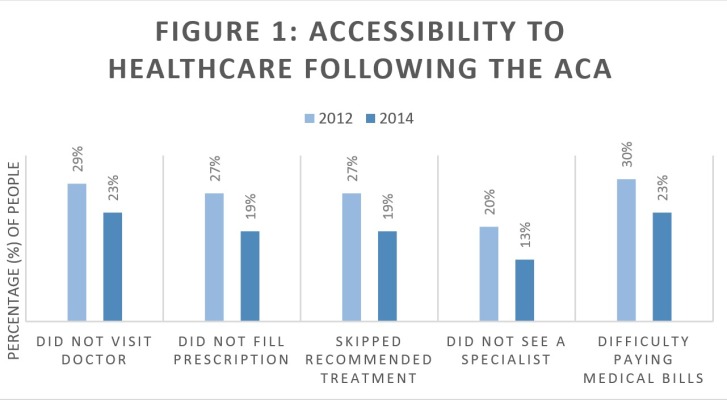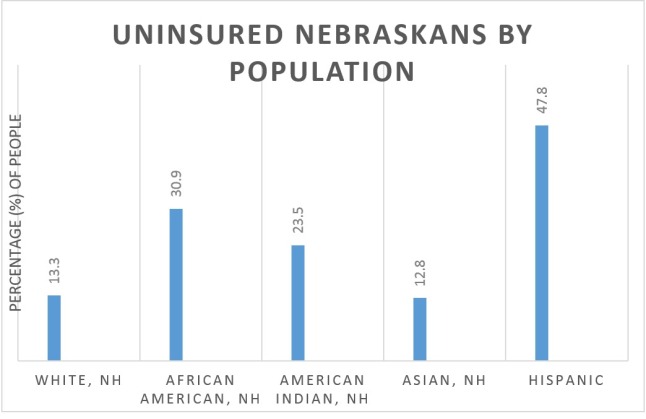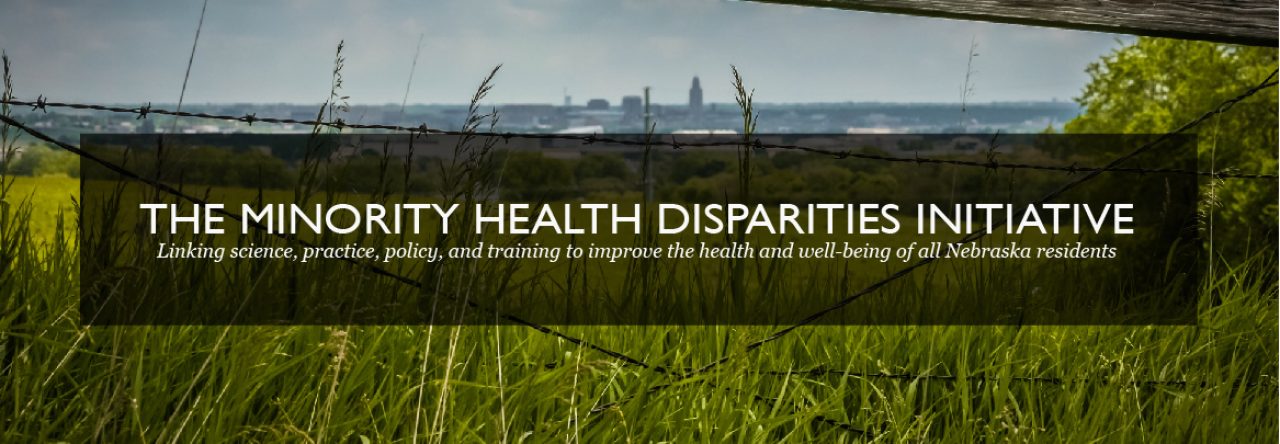The Affordable Care Act (ACA), also referred to as Obamacare, is one of the main tenants of Barack Obama’s presidency. The goal of Obamacare was to expand healthcare coverage to more Americans in terms of affordability and accessibility. Since Obamacare came into effect in March of 2010, it has effectively insured more than 20 million uninsured Americans who would have otherwise continued without access to quality healthcare. In Nebraska specifically, Obamacare has resulted in a 3.3% decline of uninsured residents since 2010. However beneficial the ACA has been for numerous Americans, President-Elect Donald Trump seeks to fully repeal Obamacare. While Trump’s administration claims that the American people have had “to suffer under the incredible economic burden” of the ACA, repeal of this legislation will result in further economic harm to those who already struggle for access to healthcare, with particular regard to under-served populations. Here are some ways Trump’s presidency will effect Obamacare:
Insured Minority Populations
Nationwide, the ACA has allowed for further accessibility to healthcare services as demonstrated by Figure 1. From 2012 to 2014, a Commonwealth Fund survey observed a significant decrease in the percentage of the American population who lacked access to one or more of these healthcare services. As observed in Figure 1, the total number of those surveyed reporting “Not Visiting a Doctor with a Medical Issue,” dropped by 6% within the two-year period following Obamacare.

Source: Commonwealth Fund Survey 2014
As Figure 1 displays, this access to healthcare services through the ACA has become more widespread for all Americans. However, healthcare still observes great disparities among minority populations. Obamacare has worked to change this reality for these under-served peoples. Since 2013, 2.3 million African Americans have gained healthcare coverage, followed by 4.2 million Latinos. For women as a whole, the uninsured rate has declined by 7.7%, allowing 55 million women access to affordable preventative services. By repealing Obamacare, Trump’s administration would once again inhibit access to quality health insurance for these under-served populations.
Medicaid
Trump’s full repeal of Obamacare includes abolition of the Medicaid expansion component of the ACA. Currently, Medicaid acts as the national public health insurance program for the 70 million Americans it serves. Through the House Republican Plan, Trump’s administration seeks to reduce federal regulation and spending on Medicaid. This plan specifically aims to allow for state control over provision of public health insurance. Through the implementation of Medicaid block-grants, the House Republican Plan would “offer states a choice between a Medicaid per capita allotment or a block grant.” This plan has the potential to significantly reduce the impact of Medicaid for millions of Americans, particularly for under-served populations, vulnerable to state discretion of need for these funded programs.
Latino Populations
For Latinos in America, Trump’s presidency will have great impact on the accessibility as well as affordability of healthcare. Over the course of its mandate, “The ACA invested $11 billion into further health care access to community health centers that receive majority Latino patients.” The ACA’s $11 billion investment in particular has effectively increased Latino access to healthcare by an estimated 35%. Trump’s presidency will affect this investment specifically for the Latino community regarding the current Medicaid system.
Expansion of Medicaid is one of the strongest components of Obamacare that has faced much national divide. Currently, 19 states have decided against expanding Medicaid to residents under the ACA. However, “If all states took advantage of new opportunities to expand Medicaid coverage under the Affordable Care Act, 95% of eligible uninsured Latinos might qualify for Medicaid, CHIP, or programs to help lower the cost of health insurance coverage in the Marketplace.” Nonetheless, given the political climate facing the Obama administration’s ACA, the Latino populations will continue under-served in public health insurance programs. Through the House Republican Plan under Trump, Latino populations living in these already Medicaid-expansion opposed 19 states will be negatively impacted. Not only will the services of Obamacare be reformed, but the proposed block-grant Medicaid will allow for further inhibition of Latino populations to Medicaid benefits as designated by state discretion.
In Our Community
While Obamacare has contributed to an increase in insured Nebraskans from 8.2% to 11.5%, the state still remains opposed to Medicaid expansion under the ACA. However, “If Nebraska made the decision to expand Medicaid, it is estimated an additional 42,000 Nebraskans would gain health insurance coverage” (2015). Trump’s plan to repeal Obamacare will impact the already insured Nebraskans under the ACA and countless more still struggling to afford healthcare. Still, years following the implementation of Obamacare, there exist disparities among Nebraskan minorities and access to healthcare, as observed in Figure 2.
 Source: Nebraska Minorities Disparity Facts Chart Book (BRFSS, 2011-2014)
Source: Nebraska Minorities Disparity Facts Chart Book (BRFSS, 2011-2014)
As displayed, African Americans, American Indians, and Hispanic populations in Nebraska continue to face no healthcare coverage, even under the ACA. Trump’s repeal of Obamacare will adversely affect these populations already predisposed to limited healthcare accessibility. For women in particular, of the 29.7 million who were given access to free preventative services under the ACA, approximately 189,000 of these female recipients were from Nebraska. In our Nebraskan community and nation-wide, a repeal of Obamacare will adversely impact the 20 million Americans granted coverage under its mandate as well as recipients benefiting from the Medicaid program. Ultimately, Trump’s plans for public healthcare will impact those most vulnerable in our country- the under-served populations who remain equally entitled to quality and affordable healthcare.
Sources:
http://dhhs.ne.gov/publichealth/Documents/Nebraska%20Disparities%20Chart%20Book%202Final.pdf
http://www.hhs.gov/healthcare/facts-and-features/fact-sheets/aca-is-working/index.html
https://www.donaldjtrump.com/positions/healthcare-reform
http://kff.org/health-reform/issue-brief/where-president-elect-donald-trump-stands-on-six-health-care-issues/
http://kff.org/disparities-policy/
http://www.hhs.gov/healthcare/facts-and-features/key-features-of-aca/index.html#

